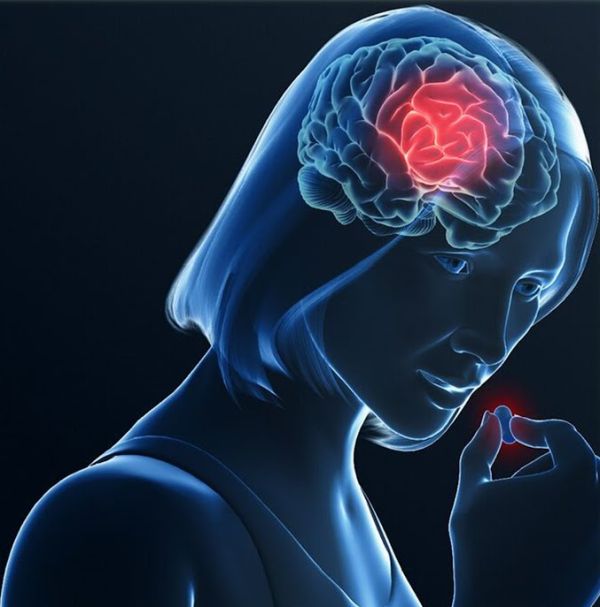The Nocebo Effect
- Details
- Written by David R. Hamilton PhD

I’ve been asked a few questions recently about the nocebo effect – the opposite of the placebo effect – so I thought I’d do some up-to-date research and share some of what I’ve found.
It’s often called the ‘evil twin’ of the placebo effect. I actually find the use of ‘twin’ quite fortuitous because there is a sort of ‘family’ resemblance between the two. You might say that the placebo is the optimistic sibling, while the nocebo is the pessimistic one.
The word placebo comes from the Latin: I shall please, as in “Placebo Domino – I shall please the Lord.” Nocebo, on the other hand comes from the Latin for I shall harm.
They work through our expectations. Positive expectations drive the placebo effect, whereas negative expectations drive the nocebo effect. In both cases, the brain simply does what it can to meet these expectations.
For example, if a person believed that a sugar pill would reduce his or her pain then it would do so, and we call this the placebo effect. Specifically, the brain produces its own version of morphine (known as an endogenous opioid) to meet this expectation.
But if the person instead believed that the pill would increase their pain, it would most likely do that instead. It’s the same pill, only the person’s expectation was different. We call this the nocebo effect.
Here, the production of endogenous opioids are blocked, thereby elevating pain. And if the person feels anxious then levels of a neurohormone known as CCK (cholecystokinin) are also impacted, which also elevates the pain.
Here’s an example of some research that showed how powerful the nocebo effect could be, but also how the placebo effect could neutralise it. A few years ago, 40 people with asthma, emphysema or restrictive lung disease were told that an inhaler contained allergens. Nineteen of them swiftly reacted with notable constriction of their airways. Twelve of them had an actual asthma attack. But the inhaler simply contained nebulised salt water. Their expectation of what should happen caused what did happen.
They were shortly given another inhaler (also nebulised salt water) and told it would relieve their symptoms. And it did. Again, their expectation of what should happen caused what did happen. The nocebo effect created their negative symptoms and the placebo effect reversed them.
Can you get a nocebo effect from a placebo?
The above example shows us that a placebo and a nocebo can be the same thing. It’s just our expectation (belief) of what it’s meant to do that creates what actually happens.
Unsurprisingly, just as the placebo effect can enhance the effects of many drugs, the nocebo effect can suppress them and also contribute to some of the side effects of them. Studies show that many people who get placebos in trials get the same side effects as those who get the drugs. In other words, they get nocebo effects from placebos.
But importantly, this only happens if a person knows or has a good idea of what to expect. If they don’t know what side effects are to be expected, then they tend not to get them. Knowledge is power, it’s been said. Although, perhaps in these situations, knowledge is a bit of a bummer. Ignorance is a blessing.
Here’s a few examples. A meta-analysis of 21 RCTs (Randomised Controlled Trials) of antidepressants found that 45% of patients who got placebos had the typical side effects of the drug – nausea, headaches, dizziness. Similarly, a meta-analysis of 56 studies of MS patients found that 74% got side effects from placebos.
This type of research shows that not only do people get nocebo effects from placebos, but that some of the side effects of actual drugs (and vaccines) are caused by our knowledge of them.
Does the nocebo effect produce side effects from Covid vaccines?
A review of 12 RCTs of Covid vaccines involving over 45,000 patients (about 22,500 who received a vaccine and 22,500 who received a placebo) found that 35% of those who received placebos got systemic side effects (headache, fever) and 16% had arm pain or redness and swelling at the injection site.
All in, the study found that about 76% of common mild adverse reactions after a first dose of vaccine were down to the nocebo effect.
There’s been a high amount of anxiety around vaccines and vaccine safety, and anxiety is fuel for the nocebo effect. It increases our negative expectations and the brain simply delivers symptoms to meet these expectations.
Some people feel offended by the idea that their mind can create such negative symptoms, but I prefer to look at it in another way. The fact that the mind can create symptoms (both positive and negative) shows us how powerful our minds are.
That’s why, in some of my work, I try to educate people in a better use of our minds. As a simple example, focusing on someone or something that bothers you produces stress hormones, which have negative effects, but simply moving your attention to a memory of an experience of kindness can neutralise those effects.
How can we calm the nocebo effect?
Researchers are now switched on to just how prevalent the nocebo effect is in healthcare. We’re now realising that it’s actually almost impossible to remove the placebo or nocebo effect from any treatment. So all we’re left with is a choice of which one we use. Placebo or nocebo.
The nocebo effect can be activated by simple words – “this will hurt” or “there’s not much else I can do for you” – by a lack of empathy, even a setting that’s overly clinical and devoid of warmth.
But a doctor who smiles and looks you in the eye boosts placebo effects. If she or he shows warmth and empathy it can even amplify the power of any prescribed treatment. Choosing soft, positive language also helps.
For example, in a study of women who were about to give birth, if the doctor or nurse said:
“We are going to give you a local anaesthetic that will numb the area so that you will be comfortable during the procedure” then pain reduction from the anaesthetic was almost twice as much than when the woman had instead been told:
“You are going to feel a big bee sting; this is the worst part of the procedure.”
Positive, soft, kindly, or supportive language helps people relax and optimises the effect of a treatment (placebo effect) but negative or harder language tends to elevate anxiety, fire up the nocebo effect, and heighten negative symptoms.
In general, pain is elevated when doctors or nurses use the words, “sting,” “burn,” “pain,” “hurt,” or “bad,” but it is much less when softer language is used.
Even changing the way a statistic is presented helps. If a doctor or nurse says, “headaches are 30% unlikely” then they occur less often than if they instead say, “headaches are 70% likely.” It’s the same thing, but simply put across in a different way. This is known as attribute framing.
The doctor dilemma
The nocebo effect poses quite a challenge for doctors. On the one hand, if a patient knows what side effects to expect, they are more likely to get them, but if they don’t know what to expect then they’re less likely to get them, or may get them more moderately.
Does a doctor just elect not to say? They can’t because they have an obligation to the patients to outline the risks involved with a drug or procedure. A doctor could face a lawsuit if she or he didn’t mention a common side effect that turned out to be serious for someone.
Many compassionate doctors with insight into nocebo effects have asked how they can get around this seeming catch-22.
Many find that the answer lies partly in what they say together with how they say what they say. “This treatment is usually quite well tolerated” and said with empathy and a reassuring smile is better than listing the percentage likelihood of common side effects, for example.
Even offering a patient a positive visual image of how the treatment will work can help some patients. Some doctors inadvertently seed negative imagery in some patients minds, which heightens anxiety and also lessens hope in the potential of some treatments, so some offer positive imagery instead, something that creates a simple mental picture of how the treatment will work.
So given all this research, I think we have some reason to be optimistic. We now have a much better understanding of how to increase placebo effects and reduce nocebo effects, tilting the balance more in favour of positive effects.
I hope you’ve found this short exploration of the nocebo effect interesting and perhaps even helpful. Please feel free to share it with friends and colleagues.
David R. Hamilton PhD Now a bestselling author of 6 books published by Hay House, he offers talks and workshops that fuse science, the mind, and spiritual wisdom. David writes a regular blog for the Huffington Post. Source Here
After completing his PhD, David worked for 4 years in the pharmaceutical industry developing drugs for cardiovascular disease and cancer. During this time he also served as an athletics coach and manager of one of the UK’s largest athletics clubs, leading them to three successive UK finals. Upon leaving the pharmaceutical industry, David co-founded the international relief charity Spirit Aid Foundation and served as a director for 2 years.
© 2022 crystalwind.ca. All rights reserved.
Liked this article? Dive deeper into personal growth and wellness! Check out CrystalWind.ca for spiritual wisdom or explore AromaWorx.ca for natural well-being tips. Spread the positivity—share this with friends on their happiness journey!
Let’s Chat! Drop Your Thoughts Below! ![]()
Disclaimer Health
All post and information provided within this blog is for educational and informational purposes only, and is not to be construed as medical advice or instruction. No action should be taken solely on the contents of this website. Please consult with your healthcare professional before making any dietary or lifestyle changes or taking supplements that may interfere with medications. Any products or information discussed are not intended to diagnose, prevent, treat or cure any illness, disease or lifestyle. Please consult your physician or a qualified health professional on any matters regarding your health and wellbeing or on any opinions expressed within this website.
Latest Articles
Dive into the Mystical World of the Crystal Wind Oracle Deck!
Get All the Enchanting Details Now!
NEW Expanded Boxed Edition!
Now with 58 Cards for Richer Wisdom!

Imagine a world of inspiration and healing, free for all—made possible by YOU!
Donate Now—Ignite the Magic at CrystalWind.ca!

Epilepsy - Finding A Cure
Your donation can make a difference!
Help us find a cure – donate now!
Unlock Your Light: Join Lightworkers Worldwide on CrystalWind.ca!
Follow Us!
Featured This Month
Egyptian Zodiac/Astrology
Egyptian astrology was one of the earliest forms of astrology. The Egyptians w... Read more
Cancer Mythology
The Mythology of Cancer: A Celestial Tale of Loyalty and Sacrifice Among th... Read more
Abalone Shell
Echos Of The Ancestors Abalone strengthens the structure of the body and th... Read more
Sun in Cancer
Cancer Sun Sign Characteristics Overview The name "Cancer" comes from Latin, ... Read more
Lugh - Celtic God Of The Sun
The god Lugh was worshiped in Ireland as a deity of the sun. This connection... Read more
Lammas by The Hedgewitch
Although in the heat of a Mid-western summer it might be difficult to discer... Read more
Chalcedony
The Stone Of Orators Chalcedony was very popular as a decorative stone in ant... Read more
































































































































































